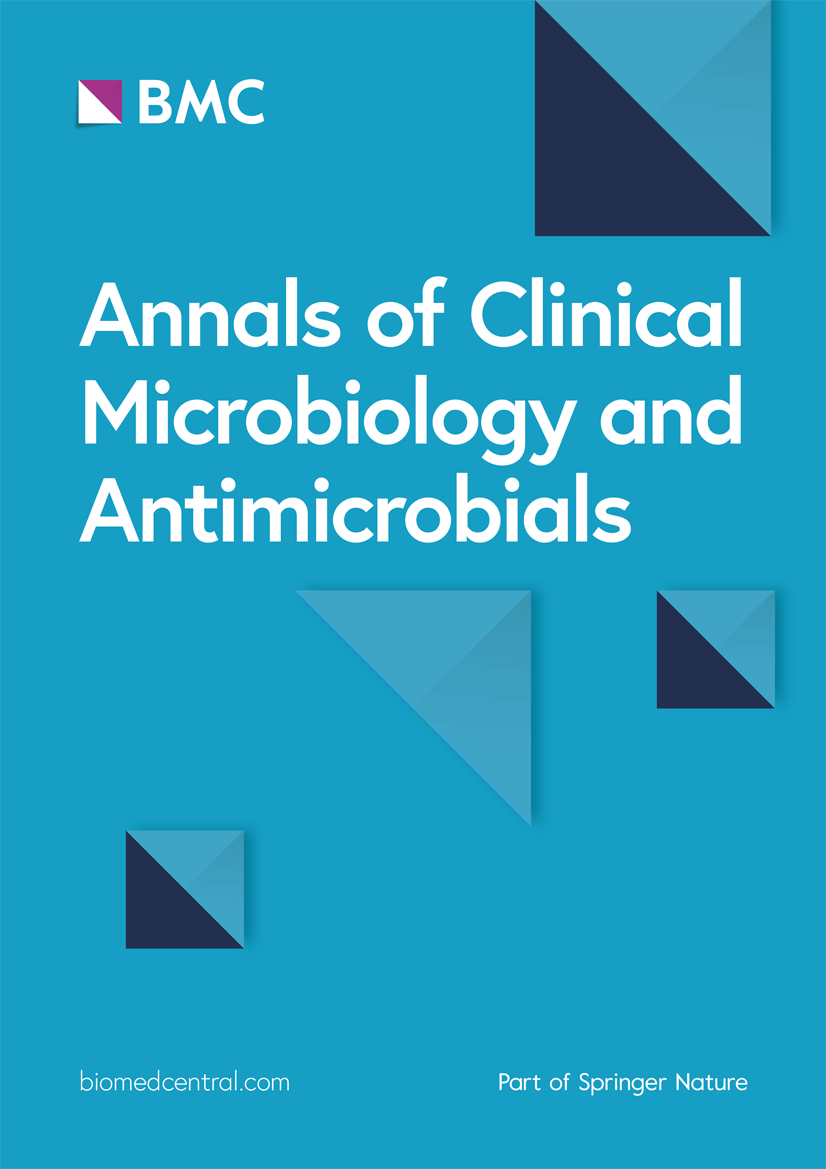Retrospective clinical and microbiologic analysis of metagenomic next-generation sequencing in the microbiological diagnosis of cutaneous infectious granulomas
IF 3.6
2区 医学
Q1 MICROBIOLOGY
Annals of Clinical Microbiology and Antimicrobials
Pub Date : 2024-09-12
DOI:10.1186/s12941-024-00744-w
引用次数: 0
Abstract
Cutaneous infectious granulomas (CIG) are localized and chronic skin infection caused by a variety of pathogens such as protozoans, bacteria, worms, viruses and fungi. The diagnosis of CIG is difficult because microbiological examination shows low sensitivity and the histomorphological findings of CIG caused by different pathogens are commonly difficult to be distinguished. The objective of this study is to explore the application of mNGS in tissue sample testing for CIG cases, and to compare mNGS with traditional microbiological methods by evaluating sensitivity and specificity. We conducted a retrospective study at the Department of Dermatology of Sun Yat-sen Memorial Hospital, Sun Yat-sen University from January 1st, 2020, to May 31st, 2024. Specimens from CIG patients with a clinical presentation of cutaneous infection that was supported by histological examination were retrospectively enrolled. Specimens were delivered to be tested for microbiological examinations and mNGS. Our data show that mNGS detected Non-tuberculosis mycobacteria, Mycobacterium tuberculosis, fungi and bacteria in CIG. Compared to culture, mNGS showed a higher positive rate (80.77% vs. 57.7%) with high sensitivity rate (100%) and negative predictive value (100%). In addition, mNGS can detect more pathogens in one sample and can be used to detect variable samples including the samples of paraffin-embedded tissue with shorter detective time. Of the 21 patients who showed clinical improvement within a 30-day follow-up, eighteen had their treatments adjusted, including fifteen who continued treatment based on the results of mNGS. mNGS could provide a potentially rapid and effective alternative detection method for diagnosis of cutaneous infectious granulomas and mNGS results may affect the clinical prognosis resulting from enabling the patients to initiate timely treatment.元基因组新一代测序在皮肤传染性肉芽肿微生物学诊断中的回顾性临床和微生物学分析
皮肤感染性肉芽肿(CIG)是由原生动物、细菌、蠕虫、病毒和真菌等多种病原体引起的局部慢性皮肤感染。由于微生物学检查的灵敏度较低,且不同病原体引起的 CIG 的组织形态学结果通常难以区分,因此 CIG 的诊断十分困难。本研究旨在探索 mNGS 在 CIG 病例组织样本检测中的应用,并通过评估敏感性和特异性比较 mNGS 和传统微生物学方法。我们于 2020 年 1 月 1 日至 2024 年 5 月 31 日在中山大学孙逸仙纪念医院皮肤科进行了一项回顾性研究。回顾性研究选取了临床表现为皮肤感染并经组织学检查证实的 CIG 患者标本。标本被送去进行微生物学检查和 mNGS 检测。我们的数据显示,mNGS 检测出了 CIG 中的非结核分枝杆菌、结核分枝杆菌、真菌和细菌。与培养相比,mNGS 的阳性率更高(80.77% 对 57.7%),灵敏度(100%)和阴性预测值(100%)也更高。此外,mNGS 还能在一份样本中检测出更多病原体,并可用于检测不同样本,包括检测时间更短的石蜡包埋组织样本。mNGS 可为皮肤传染性肉芽肿的诊断提供一种潜在的快速有效的替代检测方法,mNGS 的结果可能会影响临床预后,使患者能够及时开始治疗。
本文章由计算机程序翻译,如有差异,请以英文原文为准。
求助全文
约1分钟内获得全文
求助全文
来源期刊

Annals of Clinical Microbiology and Antimicrobials
MICROBIOLOGY-
CiteScore
8.60
自引率
0.00%
发文量
49
审稿时长
>12 weeks
期刊介绍:
Annals of Clinical Microbiology and Antimicrobials considers good quality, novel and international research of more than regional relevance. Research must include epidemiological and/or clinical information about isolates, and the journal covers the clinical microbiology of bacteria, viruses and fungi, as well as antimicrobial treatment of infectious diseases.
Annals of Clinical Microbiology and Antimicrobials is an open access, peer-reviewed journal focusing on information concerning clinical microbiology, infectious diseases and antimicrobials. The management of infectious disease is dependent on correct diagnosis and appropriate antimicrobial treatment, and with this in mind, the journal aims to improve the communication between laboratory and clinical science in the field of clinical microbiology and antimicrobial treatment. Furthermore, the journal has no restrictions on space or access; this ensures that the journal can reach the widest possible audience.
 求助内容:
求助内容: 应助结果提醒方式:
应助结果提醒方式:


